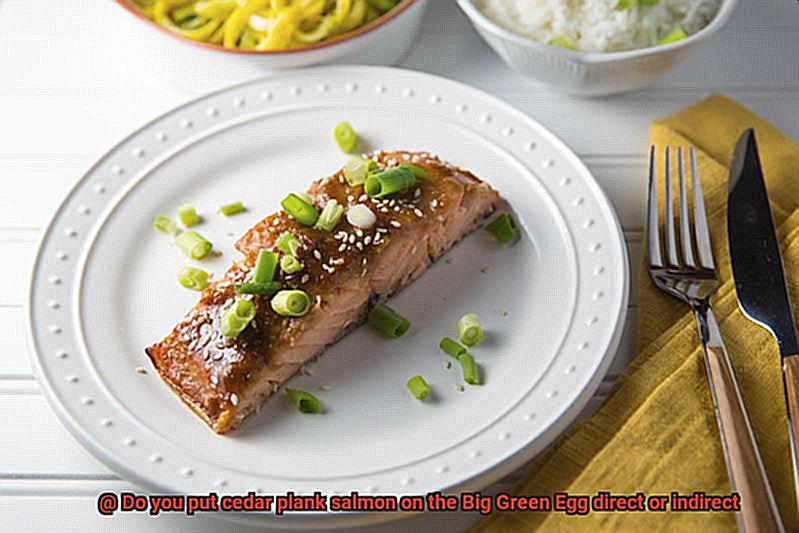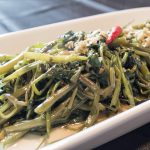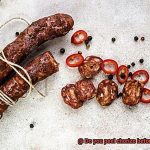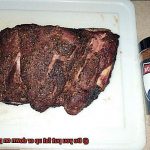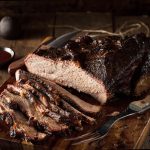Get ready to embark on a mouthwatering journey through the world of cedar plank salmon on the legendary Big Green Egg. If you’ve ever wondered whether to go direct or indirect, fear not. We’re about to spill the secrets to achieving the most succulent and smoky cedar plank salmon on your Big Green Egg grill.
When it comes to outdoor cooking, few things can compete with the tantalizing aroma and tender texture of salmon cooked on a cedar plank. The combination of natural wood and the innovative design of the Big Green Egg brings out the delicate flavors of the fish like no other method.
But here’s the burning question: should you cook your cedar plank salmon directly over the heat or indirectly? Let’s dive right in and explore the nuances and benefits of each technique so that you can choose what suits your taste and desired outcome.
Whether you’re a seasoned grill master or a novice adventurer in the realm of cooking on the Big Green Egg, understanding the differences between direct and indirect heat will empower you to wield this culinary power with confidence and finesse.
So, get those flames roaring, gather your finest cedar planks, and let’s uncover the secrets behind grilling perfect cedar plank salmon that will leave your taste buds tingling and your guests begging for seconds.
Contents
Overview of Direct and Indirect Grilling
Grilling cedar plank salmon on a Big Green Egg is a culinary adventure that combines the smoky flavors of wood with the delicate taste of fresh salmon. To achieve the best results, it’s important to understand the differences between direct and indirect grilling methods. In this article, we will explore both techniques and discuss how to use them to cook cedar plank salmon on your Big Green Egg.
Direct Grilling:
Direct grilling involves placing food directly over the heat source, resulting in high temperatures that sear and caramelize the exterior while locking in the natural juices. This method is perfect for quick-cooking items like steaks and burgers. However, when it comes to cedar plank salmon, direct grilling may not be your best option. The intense heat can risk burning the delicate fish or drying it out.
Indirect Grilling:
Indirect grilling provides a more controlled cooking environment by positioning the food away from the direct heat source. By utilizing a two-zone fire on your Big Green Egg, you can create an area of indirect heat perfect for slow and even cooking. This method is ideal for large cuts of meat or foods that require more gentle cooking, such as cedar plank salmon.
Cooking Cedar Plank Salmon:
The debate on whether to use direct or indirect grilling for cedar plank salmon is a matter of personal preference. Some chefs prefer the direct method for a smoky and charred flavor, while others opt for indirect grilling to ensure moist and tender results.
Using Indirect Heat:
To cook cedar plank salmon indirectly on your Big Green Egg, follow these steps:
- Soak your cedar plank in water for 1-2 hours before grilling to prevent it from catching fire.
- Preheat your Big Green Egg to a medium-high temperature (350-400°F or 175-200°C).
- Place the soaked cedar plank on the unheated side of the grill, away from the direct heat source.
- Season your salmon fillets and carefully place them on top of the cedar plank, skin-side down if applicable.
- Close the lid of your Big Green Egg and let the salmon cook indirectly for approximately 12-15 minutes per inch of thickness, or until the internal temperature reaches 145°F (63°C).
- Keep an eye on the cedar plank during cooking to ensure it doesn’t catch fire or char excessively. Mist it with water if needed.
- Once cooked to perfection, remove the salmon from the grill and let it rest for a few minutes before serving.
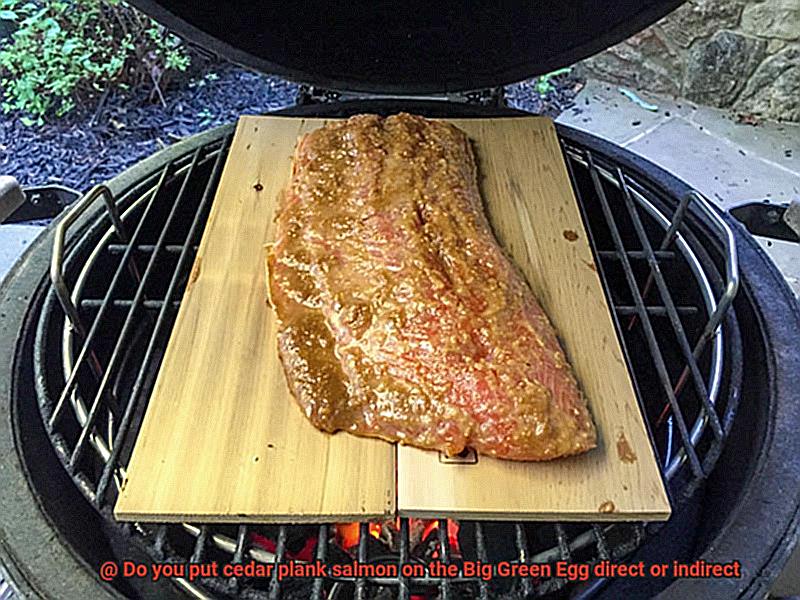
Benefits of Indirect Grilling for Cedar Plank Salmon
This versatile ceramic grill is renowned for its ability to cook food to perfection, and one dish that truly shines on the Big Green Egg is cedar plank salmon. But did you know that the way you grill your salmon can make all the difference? That’s where indirect grilling comes in.
Indirect grilling is a cooking technique where food is not placed directly over the heat source, but instead, it is cooked using indirect heat. This method is often preferred for cooking cedar plank salmon on the Big Green Egg because it allows for gentle and even cooking. So why should you choose indirect grilling for your cedar plank salmon? Let’s explore the benefits:
- Moisture retention: Indirect grilling helps prevent the fish from drying out by placing the cedar plank with the salmon on the cooler side of the grill, away from direct heat. This results in a tender and juicy salmon fillet with a melt-in-your-mouth texture.
- Enhanced flavor: Indirect grilling allows for better smoke absorption. When the salmon is placed on a cedar plank, it infuses the fish with a delicious smoky flavor. By using indirect heat, the cedar plank can smolder and release aromatic smoke, which adds depth and richness to each bite.
- Flare-up prevention: Indirect grilling reduces the risk of flare-ups and charring. Salmon is delicate and can easily stick to grill grates, leading to overcooking or burnt spots. By utilizing indirect heat, there is no direct contact between the salmon and flames, ensuring even cooking without any burnt or charred spots.
- Temperature control: Indirect grilling allows for better control over cooking temperature. The Big Green Egg’s excellent heat retention capabilities combined with indirect heat result in a consistent temperature throughout the cooking process. This is crucial when grilling cedar plank salmon, as it requires a lower and more controlled heat to achieve optimal results.
- Versatility: Indirect grilling offers versatility for adding additional ingredients or flavors to cedar plank salmon. Slices of lemon or herbs placed on top of the salmon fillet release their flavors slowly, infusing into the fish during the cooking process. Different marinades or glazes can also be experimented with, knowing that indirect heat will allow these flavors to develop and meld with the salmon.
Steps to Prepare and Cook Cedar Plank Salmon on the Big Green Egg Indirectly
If you’ve got a Big Green Egg and some fresh salmon fillets, then get ready to impress your friends and family with a delicious cedar plank salmon cooked indirectly on your grill. Indirect grilling on the Big Green Egg is a game-changer when it comes to flavor and tenderness, so let’s dive into the steps to prepare and cook this mouthwatering dish.
Step 1: Soak the Cedar Plank
To ensure a successful cook, begin by soaking your cedar plank in water for about 30 minutes to an hour. This crucial step prevents the wood from catching fire and infuses the cooking process with moisture. Trust me, you’ll thank me later for this extra step.
Step 2: Prepare the Salmon
While the cedar plank is soaking up moisture, it’s time to prepare your salmon. Choose fresh, high-quality salmon fillets that are perfect for grilling. Enhance the natural flavors by seasoning them with your desired spices and seasonings – a sprinkle of salt, a dash of pepper, a hint of garlic powder, or a squeeze of lemon juice can work wonders.
Step 3: Set up for Indirect Cooking
Now, let’s fire up your Big Green Egg. Begin by placing a heat deflector or plate setter on the bottom of the grill, followed by the grates on top. This setup creates an indirect cooking zone where the salmon will be placed next to the heat source rather than directly over it.
Step 4: Preheat the Grill
Light your charcoal and allow it to burn until it reaches a medium-high temperature of around 400°F (200°C). Consistency is key here, so be sure to maintain this temperature throughout the cooking process for even cooking of your salmon.
Step 5: Heat up the Cedar Plank
Once your grill is preheated and at the desired temperature, place the soaked cedar plank directly on the grates of the Big Green Egg. Close the lid and let the cedar plank heat up for a few minutes. This step helps infuse the salmon with a subtle smoky flavor that will leave your taste buds begging for more.
Step 6: Cook the Salmon
After heating the cedar plank, carefully place your seasoned salmon fillets on top of the plank. Arrange them in a single layer, leaving some space between each fillet for even cooking. Close the lid of the grill and let the salmon cook indirectly for about 15-20 minutes, or until it reaches your desired level of doneness. The gentle heat and aromatic cedar plank combine to create a culinary masterpiece that will have everyone coming back for seconds.
Tips to Achieve Perfectly Cooked Cedar Plank Salmon Every Time
Impress your family and friends with a mouthwatering dish by cooking cedar plank salmon on the Big Green Egg grill. Achieving perfectly cooked salmon every time, with a delicious smoky flavor and tender texture, is easier than you think. In this article, we will guide you through the process of cooking cedar plank salmon on the Big Green Egg, using both direct and indirect heat methods.
Soak the Cedar Plank:
Before grilling, soak your cedar plank in water for at least an hour. This prevents the plank from burning on the grill and adds a delightful smoky flavor to the salmon. Soaking releases moisture slowly while cooking, keeping the salmon moist and flavorful.
Preheat the Grill:
To ensure even cooking and prevent sticking, preheat your Big Green Egg grill to around 400°F (200°C). This allows for consistent heat distribution and locks in the natural juices of the salmon.
Direct or Indirect Heat:
Choose between two methods: direct or indirect heat. With direct heat, place the seasoned salmon directly on top of the grill grates, allowing for more exposure to the heat source. This method produces a slightly charred exterior while maintaining a moist interior. However, it requires attention to prevent overcooking or burning.
Indirect heat involves placing the cedar plank with the salmon on a cooler part of the grill, away from direct flames or heat sources. This slower and gentler cooking method results in tender and juicy salmon. Although it requires longer cooking times, it yields equally delicious results.
Monitoring the Temperature:
To ensure perfection, monitor the internal temperature using a meat thermometer. The ideal temperature for cooked salmon is around 145°F (63°C). Insert the thermometer into the thickest part of the fillet for an accurate reading. By keeping an eye on the temperature, you can prevent overcooking and achieve perfectly cooked salmon.
Flipping and Adding Flavors:
Enhance the flavor by flipping the fillets halfway through cooking. This evenly distributes heat and ensures both sides of the salmon are cooked to perfection. Experiment with marinades or glazes like dill, lemon, garlic, or soy sauce to add extra flavors that complement the natural taste of the fish.
Common Mistakes to Avoid When Cooking Cedar Plank Salmon on the Big Green Egg
Indulging in the smoky and delectable flavors of cedar plank salmon on the Big Green Egg is a culinary experience like no other. However, even the most skilled grill masters can stumble upon common mistakes that can jeopardize this gastronomic delight. In this guide, we will delve into these pitfalls and equip you with the knowledge to sidestep them, guaranteeing a mouthwatering salmon every single time.
Over-soaking the cedar plank:
While it’s crucial to soak the cedar plank to prevent it from turning into a charred mess, too much moisture can result in a disappointing soggy outcome. Strive for a soak time of 1-2 hours before grilling, striking the perfect balance between preventing charring and maintaining a delightful moistness.
Using a high heat setting:
The temptation to crank up the heat. But beware, my friends, for high heat can lead to overcooked, dry salmon. Instead, embrace the medium heat setting (around 350-400 degrees Fahrenheit) like a culinary guru, ensuring even cooking and preserving that desired tenderness.
Not preheating the cedar plank:
Preheating the cedar plank before delicately placing the salmon atop is a vital step that should never be overlooked. This simple act prevents sticking and guarantees an even cooking experience throughout.
Neglecting to season the salmon:
Seasoning—the key to unlocking flavor nirvana. Yet, many disregard this essential step, leaving their salmon lackluster. Don’t be one of them. Generously season your salmon with salt, pepper, and your favorite herbs or spices. Watch as the natural smoky embrace of the cedar plank dances harmoniously with these added flavors.
Opening the lid too frequently:
Resist the urge to peek constantly at your salmon, for it will lead you astray. Opening the lid too often causes temperature fluctuations, prolonging your cooking time. Open the lid only when necessary, such as when flipping the fish or adding ingredients, maintaining a steady and controlled cooking environment.
Overcooking the salmon:
Ah, the art of doneness—the fine line between succulence and tragedy. Overcook, and you risk a dry and tough texture. Use a trusty meat thermometer to monitor the internal temperature of your salmon, removing it from the grill when it reaches 135-140 degrees Fahrenheit for that perfect medium doneness.
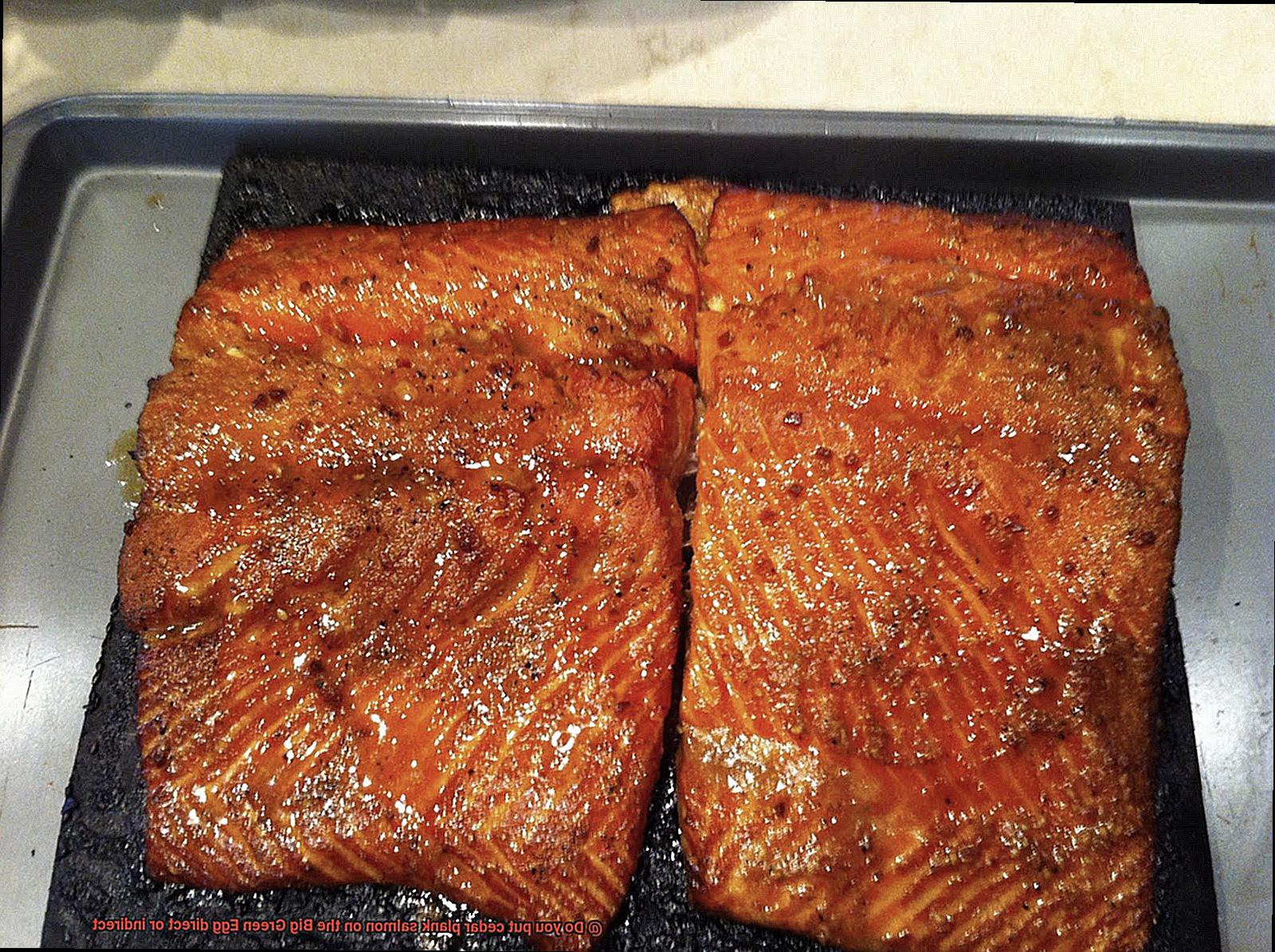
Not allowing the salmon to rest:
Patience, dear grill master, patience. Allow your cooked salmon to rest under a tent of foil for about 5 minutes before serving. This moment of tranquility allows the juices within to redistribute, creating a more flavorful and moist final masterpiece.
How to Tell if the Salmon is Done
Grilling salmon is a delicious and healthy way to enjoy this flavorful fish. However, determining when the salmon is perfectly cooked can be a challenge. In this comprehensive guide, we will explore various methods to help you confidently determine if your salmon is done on the grill.
Visual Cues:
When grilling salmon, visual cues can provide valuable insights into its doneness. As the salmon cooks, its flesh should change from translucent to opaque. This transformation indicates that the proteins in the fish have coagulated, resulting in a firmer texture.
Additionally, a fully cooked salmon should easily flake apart with a fork. Look for vibrant orange-pink color and firmness in the fish to ensure it is cooked through. The vibrant color signifies that the natural oils in the fish have been released, enhancing its flavor and moistness.
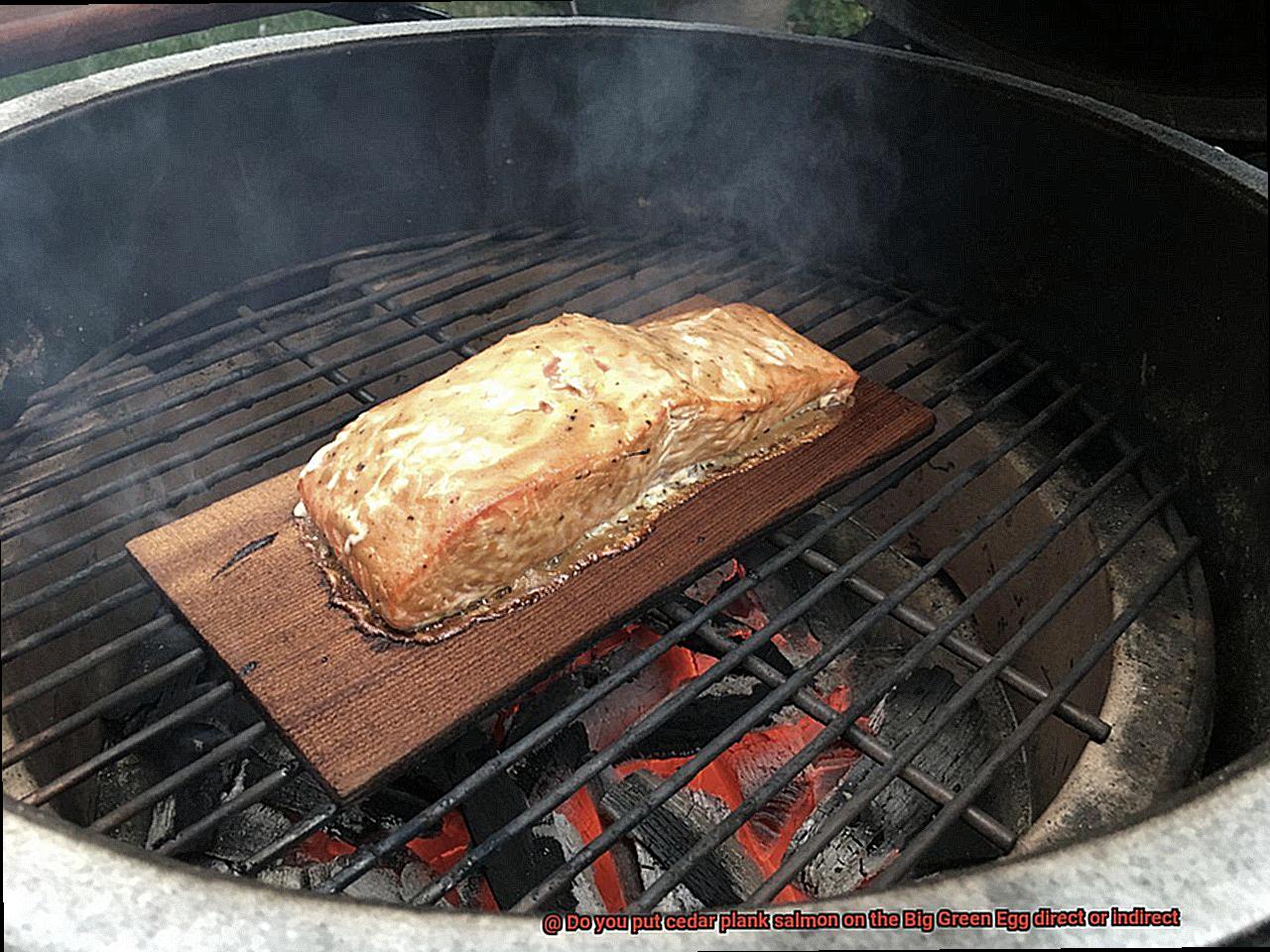
Internal Temperature:
Using a meat thermometer is one of the most reliable ways to determine if your salmon is done. Insert the thermometer into the thickest part of the fish, making sure not to touch the bone or cedar plank. The recommended internal temperature for cooked salmon is 145°F (63°C).
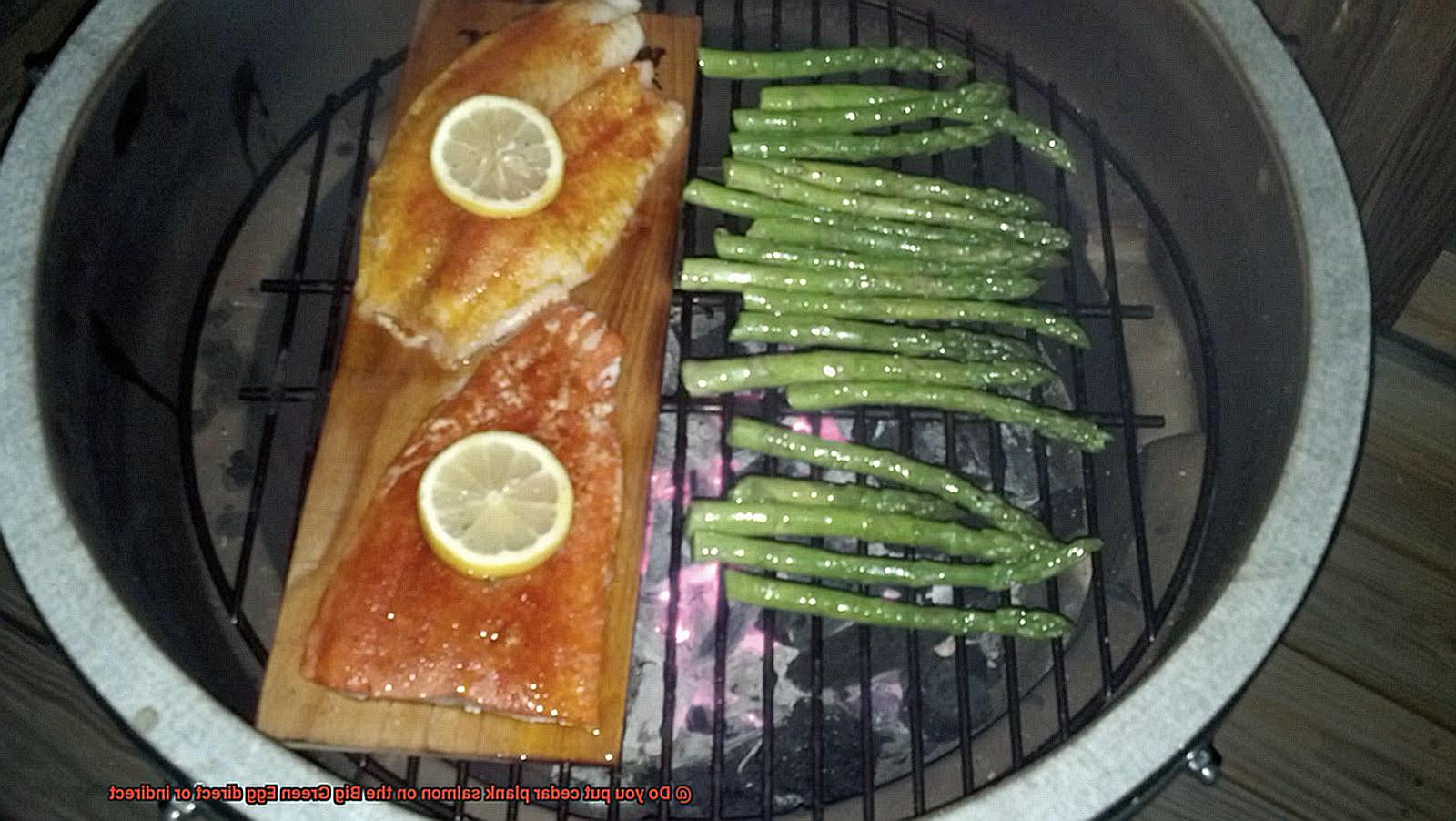
Once the salmon reaches this temperature, it is safe to eat. Keep in mind that salmon can be slightly undercooked if you prefer it to be more tender and moist, but it should still reach at least 145°F (63°C) for safety reasons.
Touch Method:
Another method to check if your salmon is done is by using the touch method. Gently press down on the top of the salmon with a fork or your finger. If it feels firm and bounces back slightly, it is likely cooked through. The firmness indicates that the proteins have reached their desired level of coagulation and have set, resulting in a flaky texture. However, if it feels soft and mushy, it may need more time on the grill.
Color Method:
Cooked salmon should have an opaque appearance and a vibrant orange-pink color. The opaque appearance indicates that the flesh has turned solid and is no longer translucent. If the salmon still looks translucent or has a grayish hue, it needs more time on the grill. Different types of salmon may have slightly different colors when cooked, so familiarize yourself with the specific variety you are grilling. The vibrant orange-pink color is a visual indicator of the fish’s freshness and flavor.
How to Serve and Enjoy Your Cedar Plank Salmon
Grilling cedar plank salmon is a fantastic way to enhance the flavors of this popular fish. Once you’ve mastered the art of grilling it to perfection, it’s time to serve and enjoy your cedar plank salmon. In this guide, we’ll take you through the process, from garnishing and pairing with sides to savoring each bite. Let’s dive in and elevate your cedar plank salmon experience.
Presenting the Cedar Plank Salmon:
After grilling your cedar plank salmon, carefully remove it from the plank using a spatula or tongs. Place the salmon on a serving platter or individual plates, ensuring it remains intact as much as possible. For an impressive presentation, consider arranging the salmon fillets on a bed of mixed greens or serving them alongside roasted vegetables.
Enhancing with Garnishes:
Elevate the visual appeal and flavor of your cedar plank salmon by adding garnishes. Sprinkle fresh herbs like dill, parsley, or chives over the top of the salmon to add brightness and freshness. Sliced lemon or lime wedges can be placed alongside the salmon for an extra burst of citrus flavor. Drizzling a homemade sauce or glaze, such as lemon dill sauce or maple glaze, over the salmon adds moisture and enhances its natural flavors.
Pairing with Complementary Sides:
Cedar plank salmon pairs well with a variety of side dishes that complement its flavors. Roasted potatoes, grilled asparagus, or a fresh summer salad with a tangy vinaigrette are all excellent options. For a heartier meal, serve the salmon with rice pilaf, couscous, or even mashed potatoes. The sides should enhance and balance the flavors of the salmon without overpowering it.
Wine and Beverage Pairings:
Choosing the right wine or beverage can elevate your cedar plank salmon experience. White wines like Chardonnay or Sauvignon Blanc go well with the rich and savory flavors of the salmon. If you prefer red wine, opt for a Pinot Noir or light-bodied Merlot. For non-alcoholic options, try sparkling water infused with cucumber or mint for a refreshing twist.
Savoring the Flavors:
To fully enjoy your cedar plank salmon, take your time while eating. Appreciate the smoky aroma and tender texture of the fish. Cut each bite-sized piece and savor it slowly, allowing the flavors to unfold on your palate. Engage in conversation and enjoy the company of your dining companions, as food is meant to be enjoyed together.
Alternatives to Cooking Cedar Plank Salmon on the Big Green Egg
If you’re a fan of the smoky, melt-in-your-mouth goodness of cedar plank salmon but don’t have a Big Green Egg, fear not. There are several alternative methods that will still deliver incredible flavor and make your taste buds dance with joy. Join us on this grilling adventure as we explore different ways to cook cedar plank salmon.
Traditional Grill:
- Enjoy the direct heat method by using a traditional grill.
- Place the cedar plank directly on the grill grates and cook the salmon over the flames.
- Result: Beautifully charred exterior with a moist and flaky interior.
Oven Magic:
- Achieve the smoky flavor in your regular oven by using a cedar grilling plank.
- Soak the plank in water, preheat the oven, and place the plank in.
- Add your seasoned salmon fillets for perfectly cooked salmon with that signature cedar aroma.
Stovetop Grill Pan:
- Quick fix without compromising flavor using a stovetop grill pan.
- Preheat it over medium-high heat, place the soaked cedar plank on top, and add your seasoned salmon fillets.
- Get beautiful grill marks while retaining moisture.
Cedar Plank Wrap:
- The cedar plank wrap method for those short on time.
- Wrap seasoned salmon fillets in a piece of soaked cedar plank and cook directly on a hot grill or in the oven.
- The wrap keeps the fish moist and infuses it with that distinctive cedar flavor.
Get Adventurous with Different Woods:
- Explore different wood options like alder, maple, or hickory for added variety.
- Soak planks in water and experiment to find your perfect pairing.
- Each wood imparts its own unique flavor to the salmon.
ZsiCg95uBSU” >
Conclusion
When it comes to cooking cedar plank salmon on the Big Green Egg, the debate of direct versus indirect grilling is a hot topic. Some argue that direct grilling allows for a more intense heat that sears the fish and imparts a smoky flavor, while others swear by indirect grilling for a more gentle and even cooking process.
But let me tell you, there’s no one-size-fits-all answer to this question. It ultimately depends on your personal preference and desired outcome.
If you’re looking for that crispy skin and charred edges, then direct grilling is the way to go. Place your cedar plank salmon directly on the grill grates over medium-high heat and let it cook for about 10-12 minutes per inch of thickness. This method will give you those beautiful grill marks and a slightly smoky taste.
On the other hand, if you prefer a more delicate and moist result, indirect grilling might be your best bet. Set up your Big Green Egg for indirect cooking by placing a plate setter or convEGGtor in the grill with the legs facing up. This creates a barrier between the heat source and the fish, allowing for a slower and gentler cooking process. Cook your cedar plank salmon on top of the plate setter or convEGGtor at around 350°F for approximately 20-25 minutes per inch of thickness.
No matter which method you choose, make sure to soak your cedar plank in water for at least an hour before grilling to prevent it from catching fire. The moisture from the soaked plank will also help infuse your salmon with additional flavors.
So there you have it – whether you opt for direct or indirect grilling on your Big Green Egg, rest assured that deliciousness awaits. Experiment with both methods to find your perfect balance of smoky char and tender flakiness.

